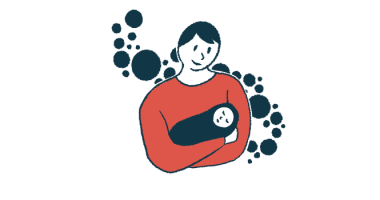Expert voice: Safe and effective exercise for people with Pompe disease
Pompe Disease News asked physical therapist Tracy Boggs to answer questions about making exercise safe and effective for people with Pompe disease.
Boggs graduated from the University of North Carolina with a master’s in physical therapy and is a board-certified clinical specialist in neurologic physical therapy. She has more than 20 years of experience working with adults who have neurologic and neuromuscular disorders. Since 2011, she has worked with people who have genetic metabolic disorders, such as Pompe and several other glycogen storage diseases, in clinics and as part of multiple research studies. She has also presented numerous times at the annual Duke/United Pompe Foundation Adult Pompe Patient Meeting and has participated in two advisory boards focused on Pompe disease.

Tracy Boggs is a physical therapist who has done advocacy and treatment specific to Pompe disease. (Photo courtesy of Tracy Boggs)
What types of exercises are recommended for people with Pompe disease that might differ from those without the condition?
People with Pompe benefit from the same types of exercise as almost everyone else:
- Professionals recommend aerobic exercise, which conditions the heart and lungs, to improve endurance. There are a wide variety of activities that fit into this category, like walking, using an elliptical, stationary bike, arm bike, etc.
- Strengthening exercises are also key to maximizing functional independence and a person’s ability to participate in activities that they value. Addressing core stability and posture are areas of particular emphasis since both are impaired by the typical patterns of weakness affecting those with Pompe.
- Flexibility exercises (stretches) are beneficial to maintain range of motion.
- Balance exercises may be needed to address deficits that typically arise from weakness.
One main difference when developing an exercise program for someone that has Pompe relates to the level of intensity. It is thought that the disease process makes Pompe muscles more fragile and at risk of injury from excessive strain. Submaximal levels of exercise are known to be safe for someone with Pompe to avoid potential muscle damage. More research is needed before we can say for sure if higher intensities are safe or beneficial.
What should a person with Pompe be careful about when exercising?
As mentioned above, exercise within submaximal guidelines is encouraged, while heavy weights and very intense exercise are not. The risk of falling can also be a concern, especially as weakness progresses. As a result, we recommend people seek out safe modes of exercise — like using a stationary bike instead of walking on a treadmill, or using an assistive device for walking on outdoor surfaces.
The work of breathing is also a consideration when deciding how to exercise, since the diaphragm is often weakened in those with Pompe. For example, aquatics can be great, but a person needs to consider how deep they can tolerate being in the pool. The higher the water level, the more pressure is placed on the diaphragm, which can make breathing more challenging.
Ultimately, a person with Pompe should consult their medical team (which includes a physical therapist) to seek specific advice on developing an exercise plan tailored to them.
What do you recommend for those fearful of falling while exercising?
There are many safe options for exercise when a person has balance impairments. If they are not sure how to proceed, a physical therapist can assist them in determining the safest plan. If someone enjoys walking outside, using some type of device to enhance stability (like trekking poles or a cane) would be beneficial. When deciding which piece of cardio equipment to use, a seated option like a stationary bike can be safer than walking on a treadmill.
Aquatic exercise is another safe option because the resistance of the water can be used for effective strengthening and aerobics, while the buoyancy of the water makes it easier to stay upright and can reduce a person’s fear of falling.
Finally, there are a wide variety of seated exercise classes online and in person (e.g. seated yoga, dance, and boxing) that address cardio, strengthening, and flexibility.
Should a person with Pompe push their limits when feeling muscle weakness, or is it best to stay within the range of felt/sensed limitations?
To reduce the risk of injury, I recommend a start-low-and-go-slow approach to exercise. The right level of exercise is something that must be determined for each person based on their presentation. So, the best weight for one person may not be appropriate for another. By increasing the weight used for an exercise gradually, one can find their limit without going over it and damaging muscle.
With progressive disease, it’s hard to find a reason to exercise when one feels they can never reach their goals. Do you have advice for them?
Since goal-setting can be challenging with a progressive disease, it’s necessary to have an honest conversation about what is important to a person and develop realistic goals that add value to their life. Once these are identified, we can then work backward to see how targeted exercise could assist a person in achieving their goals.
For example, a person’s goal may be playing with their grandkids. If we help them understand how exercise can increase their endurance and strength to achieve this, they will likely be more engaged in an exercise plan. Working toward something of value in this way can increase motivation.
It is also important to look at activities a person enjoys and use these to base an exercise plan around when possible. For example, someone that enjoys nature would more likely enjoy walking outside instead of on a treadmill at a gym.
What recommendations might you have for a person with fatigue who finds they’re exhausted for days after exercise sessions?
My first recommendation would be to make sure they are adhering to the submaximal exercise guidelines to avoid overworking themselves. Exercise is crucial in combating fatigue, but if done too vigorously, it could be counter-productive. In general, if you haven’t recovered two hours after exercising, you likely did too much and need to back down the intensity or amount. Finding the proper pace and the right level of intensity are key to avoiding overexertion.
If trying to get all your exercise in at one time is too much, you can sprinkle exercise throughout your day. Small chunks of exercise can be more manageable and add up to offer the same benefit as a long session, with the added bonus of being less fatiguing. These exercise chunks can also help reduce pain and stiffness from prolonged periods of inactivity.
Also, give yourself credit for what you are doing throughout the day. You can use wearables (fitness trackers) to help you monitor your activity for a more objective measure. Strive for variety in your plan. If your job requires lots of walking, then you may need to focus more on other types of exercise like strengthening, balance, or flexibility. And if you have had a particularly hard day, modify your routine to focus on something more gentle, like stretching, relaxation, or breathing exercises.
Finally, stick to your plan and don’t try to get in extra minutes or reps on a day because you are feeling good. Such overactivity could lead to excessive fatigue or pain, which may then lead to excessive rest — a cycle that is best avoided.
Note: Pompe Disease News is strictly a news and information website about the disease. It does not provide medical advice, diagnosis, or treatment. This content is not intended to be a substitute for professional medical advice, diagnosis, or treatment. Always seek the advice of your physician or other qualified health provider with any questions you may have regarding a medical condition. Never disregard professional medical advice or delay in seeking it because of something you have read on this website. The opinions expressed in this column are not those of Pompe Disease News or its parent company, Bionews, and are intended to spark discussion about issues pertaining to Pompe disease.
Related Articles






